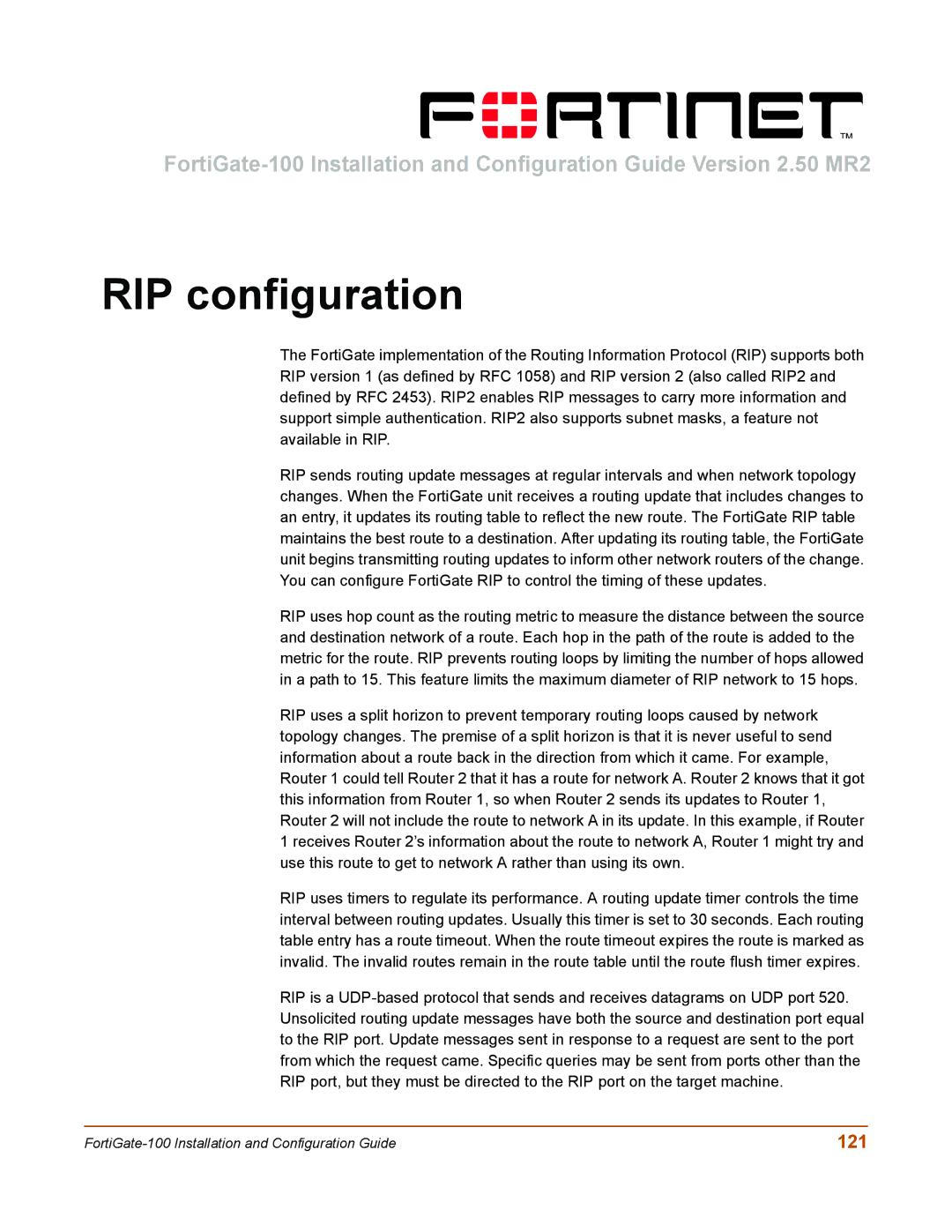
RIP configuration
The FortiGate implementation of the Routing Information Protocol (RIP) supports both RIP version 1 (as defined by RFC 1058) and RIP version 2 (also called RIP2 and defined by RFC 2453). RIP2 enables RIP messages to carry more information and support simple authentication. RIP2 also supports subnet masks, a feature not available in RIP.
RIP sends routing update messages at regular intervals and when network topology changes. When the FortiGate unit receives a routing update that includes changes to an entry, it updates its routing table to reflect the new route. The FortiGate RIP table maintains the best route to a destination. After updating its routing table, the FortiGate unit begins transmitting routing updates to inform other network routers of the change. You can configure FortiGate RIP to control the timing of these updates.
RIP uses hop count as the routing metric to measure the distance between the source and destination network of a route. Each hop in the path of the route is added to the metric for the route. RIP prevents routing loops by limiting the number of hops allowed in a path to 15. This feature limits the maximum diameter of RIP network to 15 hops.
RIP uses a split horizon to prevent temporary routing loops caused by network topology changes. The premise of a split horizon is that it is never useful to send information about a route back in the direction from which it came. For example, Router 1 could tell Router 2 that it has a route for network A. Router 2 knows that it got this information from Router 1, so when Router 2 sends its updates to Router 1, Router 2 will not include the route to network A in its update. In this example, if Router 1 receives Router 2’s information about the route to network A, Router 1 might try and use this route to get to network A rather than using its own.
RIP uses timers to regulate its performance. A routing update timer controls the time interval between routing updates. Usually this timer is set to 30 seconds. Each routing table entry has a route timeout. When the route timeout expires the route is marked as invalid. The invalid routes remain in the route table until the route flush timer expires.
RIP is a
121 |
